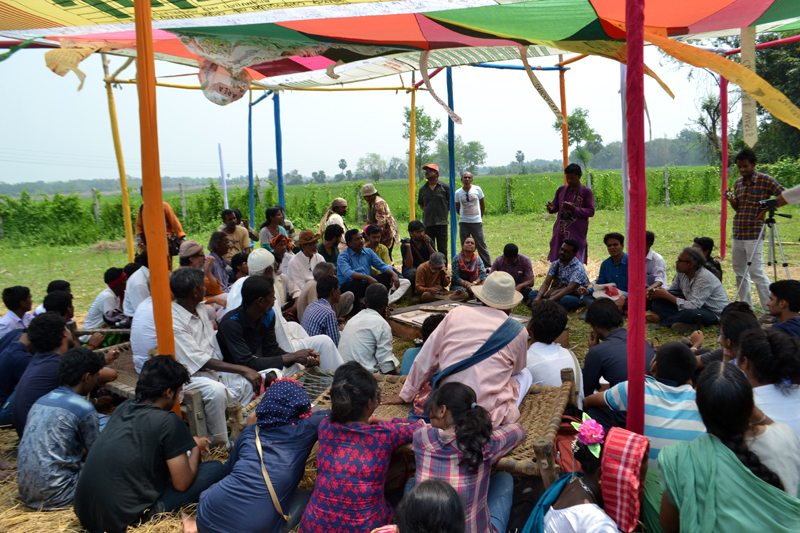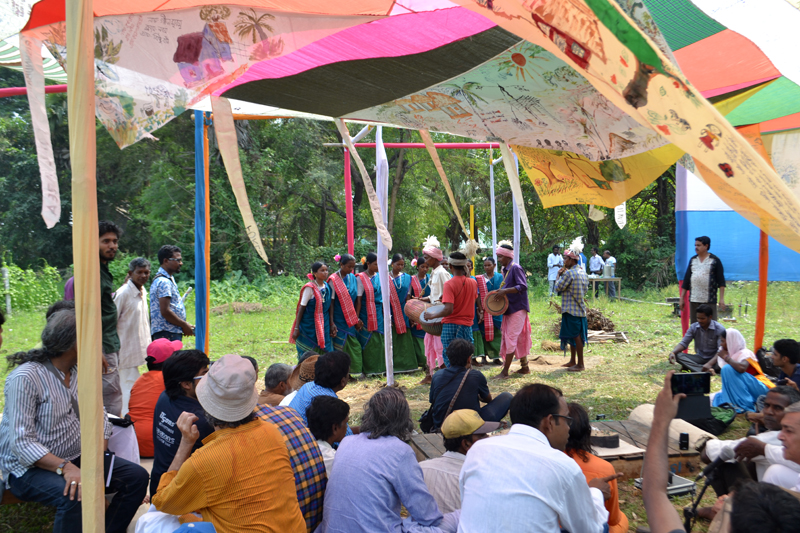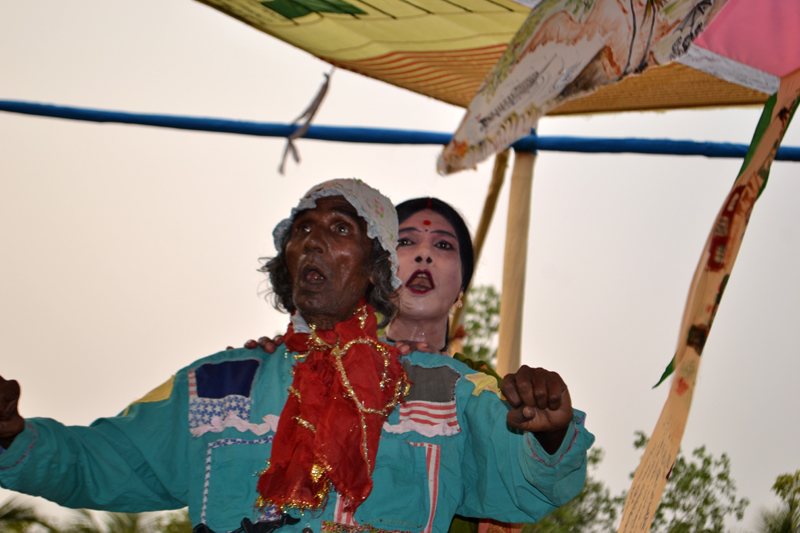Sanchayan Ghosh
Grant Period: Over one year and six months
This project, ‘Mukhomukhi’ (trans. Face to Face) aims to research into and document the various social and cultural practices associated with the landscape of the Rahr area of West Bengal. This area is typically characterised by the presence of red laterite soil and stretches from the Chhotanagpur plateau to the delta of the Ganges encompassing the districts of Purulia, Bankura, Birbhum, Burdwan, Midnapore, Howrah, Hoogly and parts of Murshidabad in West Bengal and adjacent parts in Jharkhand and Bihar. The area displays distinct flora and fauna owing to the particular variety of soil, and has been home to many indigenous tribes for centuries with the highest concentration of schedule caste population in India. Sanchayan is focusing on the district of Birbhum for this project. He will be working in association with the Sahityika theatre group in Birbhum and Hara Kumar Gupta, a well-known folk singer from the region.
According to Sanchayan, the landscape here plays a significant role in the socio-cultural life of the people. The name ‘Birbhum’ literally translates to the ‘land of the brave’. Its geology is a mix of cultivable land, barren earth rich in natural minerals, forest areas as well as a few rocky vistas. Cultivable land in the area is usually owned by the upper caste, and the majority of the tribal and schedule caste population are workers in those fields. This dependency on the agricultural economy has given rise to many local rituals and religious practices that relate directly to soil and fertility. Stone quarries and open mines in the area are another source of income and relates directly to the soil as well. The area has been major centres for Vaishnavite, Sufi, Shakta and Tantrik sects which place great importance on the soil, and the human body as soil. This reflects in the rituals they practice and the cultural identity they create for themselves. Finally, the porous soil of the region is conducive for snakes and religious and cultural practices focussing on the snake goddess Manasha has also found its stronghold here. Sanchayan argues that the multi-layered connections of people with the soil and geographical features of the area are of supreme importance to understand and archive the socio-cultural practices of the region.
In the recent years, however, this relationship of the local people with the soil has started to fall apart. Agricultural economy is giving way to a service oriented industrial economy. The proliferation of electronic media has started moulding the cultural identities of the traditional communities here, as in many other places in India. With increase in tourism and consumerism, the old artistic practices that were part of everyday life and living are assuming commercial and tokenistic roles. All this is contributing to shifts in the socio-cultural milieu and the lived practices of the people. According to Sanchayan, the present generation of gurus or traditional performers is perhaps the last in line. Younger generations have taken up other vocations and are losing touch with their land related practices. Thus this attempt to research, document and archive these practices seems extremely valuable and timely. Sanchayan’s method also demands attention here. A practicing academic himself, he has fortunately resisted using direct anthropological methods of data collection and analysis. His approach instead is participatory and dialogical in nature. He is planning to organise a series of six workshops, each corresponding to the six seasons predominant in Bengal. Each of these six workshops will be conducted in a specific region of the Rahr belt – quarry, cultivable land, rocky areas, forests etc. They will bring folk performers, scholars, theatre practitioners and village elders in conversation with each other to address various issues like migration of labour, impact of urbanisation, myths and rituals, and impact of rain on the region and thereby the cultural practices of people therein. The process of these workshops will be documented and archived.
This project is important to the newly articulated Arts Research programme for many reasons. It attempts to break new conceptual ground in research while looking at the various histories and artistic expressions of a particular region. It creates a dialogue between theory and practice by bringing in both scholars and artists into the discursive workshop space. It does not embrace the usual argument of decay and conservation employed by various dominant discourses, rather, pursues the generation of a debate on the present situation without losing sight of the wealth of rich artistic traditions. The project also attempts to push for new methodologies of archiving cultural geographies and histories that are oral and marginalised for the most part. While the platform resulting from the workshops would be the most significant outcome of this project, Sanchayan is planning to create a blog documenting the whole process and a prototype of a photo-book at the end of the process.





